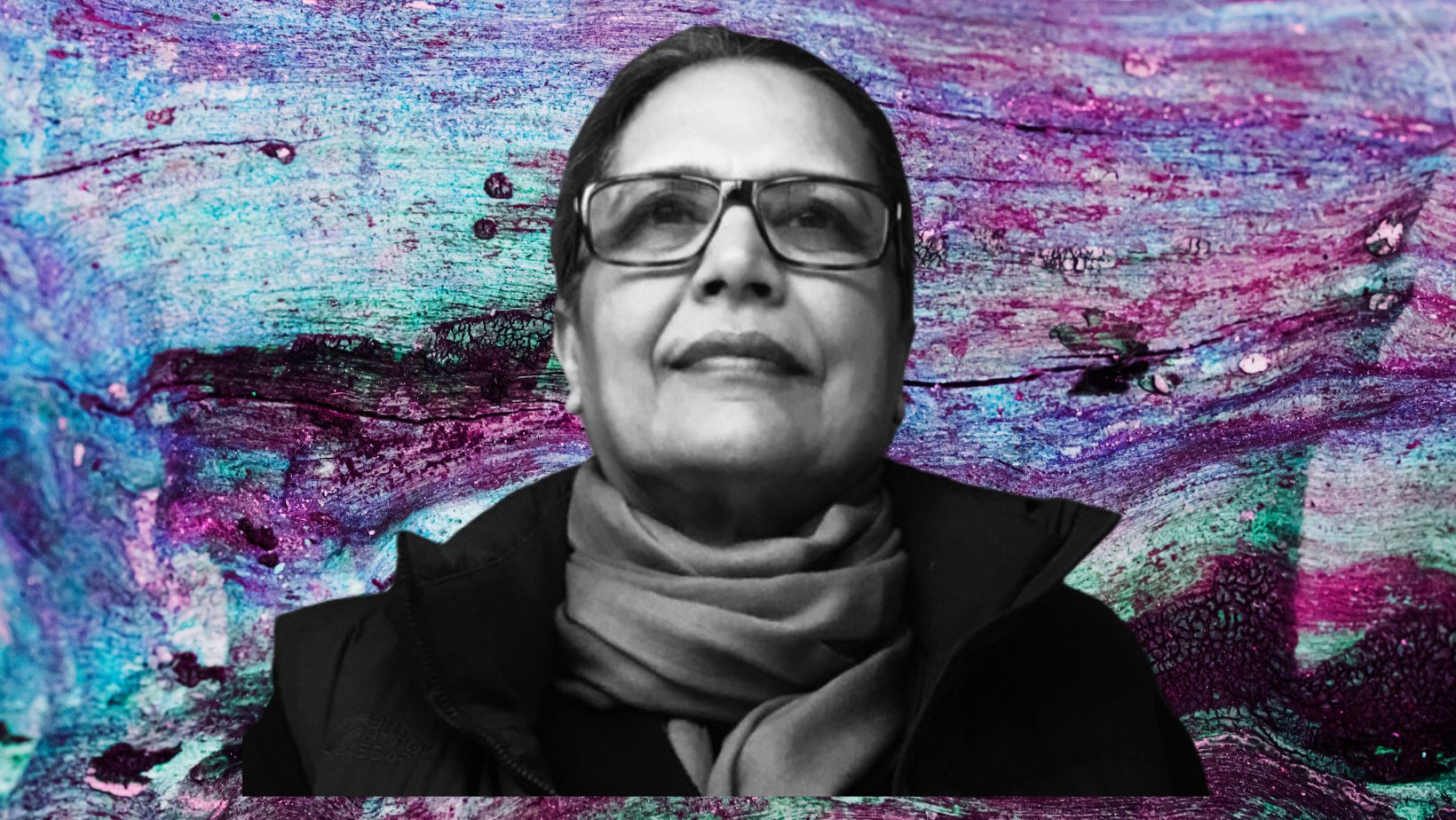Nandita Chaudhary is a foremost expert on child psychology. She served as a professor at Lady Irwin College in India for over 35 years and teaches in Brazil.
Dr. Chaudhary has an impressive record of over 70 publications and several books. Her work challenges mainstream views of parenting, child-rearing, and child health. Given recent debates concerning child research conducted primarily in WEIRD nations (Western Educated Industrialized Rich and Democratic) and subsequently applied universally, her work carries significant relevance.
How we understand and shape the lives of children is crucial to how we perceive suffering, healing, and mental disorders. In this interview, we delve into how global organizations like UNICEF may unintentionally harm those they aim to help, how children raised with multiple caregivers can be misclassified as problematic by psychology, and how our comprehension of families, children, and mothers is severely limited.
Most importantly, we discuss how studying childcare across various cultures can enlighten us about different ways of living, loving, and understanding one of the most vulnerable among us – children. This might allow us to examine our own biases, practices, and narratives more effectively.
The transcript below has been edited for length and clarity. Listen to the audio of the interview here.
Ayurdhi Dhar: Why are you interested in studying the lives of children and their caregivers?
Nandita Chaudhary: My interest in developmental psychology began during my undergraduate studies. You’re striving to understand the formation of a human being, and we know the significance of an environment that complements, resists, and promotes various aspects of development. Then I got married and had my own children, which solidified my interest — I became curious about their behaviors, alternative possibilities, and how I could excel as a parent to raise my children.
Dhar: When did you realize that what you had studied about children in psychology did not align with what you were observing in India?
Chaudhary: It was a gradual realization. My postgraduate study was designed with an eclectic perspective where we had courses on social anthropology, sociology, physiology… It was this innovative curriculum that aided me in developing the idea that there was much more occurring than what the textbooks suggested.
Dhar: Let’s discuss your work on Attachment Theory. The concept of “Attachment” is omnipresent, especially on social media. Social workers, influencers, clinics, court orders, etc, utilize it. This idea posits that a certain type of parent leads to a specific kind of attachment, which, if flawed, can cause a particular type of abandonment, trauma, or disorder.
Chaudhary: Attachment Theory advocates that the healthy emotional development of a child throughout life is determined by a singular, exclusive, responsive, predictable caregiver.
However, the terms responsive, predictable, exclusive, and consistent are not typically associated with any Indian parent. The expectation for an individual to behave consistently all the time is virtually impossible as it depends on your emotional state and your surroundings.
In our context (Indian context), it heavily depends on your company. This significance of others and the presence of multiple caregivers is a key distinction between what is perceived as a context for healthy development in WEIRD (Western, Educated, Industrialized, Rich, and Democratic) countries and the reality of childcare in the majority world.
No Indian language possesses an equivalent term for ‘Parenting.’ The term is always childcare and nurture, “paalan poshan.” This is profoundly reflective of the concept that the focus is on what is done with the child rather than who does it. Childcare is a verb and allows for the interchangeability that characterizes the care of children.
Dhar: As an example — when we think about predictable and consistent caregiving (promoted by attachment theory) — my 1.5-year-old is not allowed to look at phones, but my response also depends on the context. When I am exhausted or on an airplane, she can have it for a few minutes. When she is around her cousins, it depends on what other children are doing. My response depends on who is around us. People are not constantly predictable or consistent in every situation.
Chaudhary: Absolutely, and the testing of attachment is conducted in a laboratory setting. Those results are then generalized to ordinary life, and people are judged based on that.
The strange situation test, involves the mother leaving the room (lab) and the child being left alone with a stranger. If the child displays separation anxiety and also approaches the mother upon her return, it is viewed as a healthy sign. Firstly, the lab setting is so distinct from the home that it, in itself, is strange.
Also, if the child is accustomed to having other people around, the mother’s departure may not elicit any anxiety. If the child is so intrigued by the toys because she has no toys at home and doesn’t react to the mother’s return, that is interpreted as pathological.
Even in the West, the use of the attachment protocol is highly questionable. When you label a child as disengaged or inadequately attached, it has significant repercussions. As you’ve noted in your work, labeling can be a form of violence.
The lab is a controlled environment which psychologists presume is the ideal way of observing children. However, can you extrapolate from this environment to the home? Developmental psychology has been exceedingly unfair to mothers because it assumes mothers have no other obligations but to respond to their child, who has, in reality, caused substantial disruption in their lives.
Attachment Theory fails to understand the mother’s viewpoint and that she herself requires care, relief, and support. In India, in larger families, it’s commonly said that it’s the mother who needs care. It is traditional to send the mother to her own maternal home for the birth. The idea is not that the child will be cared for, that is taken for granted, but rather that the mother herself needs care.
Dhar: A bias of attachment theory is the assumption that a family system is always a nuclear family — there’s going to be predominantly a mother at home to form an attachment with. But in most parts of the world, there is a constant presence of uncles, aunts, cousins, neighbors, friends, grandparents, strangers, etc.
Regarding the lives of children in other parts of the world — could you tell me about the ‘many by many’ model of childcare you developed with Heidi Keller?
Chaudhary: At one point in my career, we looked at the Hindi word ‘Mamta,’ meaning a mother’s special love for her own child. Its origin is Sanskrit, where the word includes ‘mam,’ which means ‘myself’ and ‘love.’ It’s a word that means both a mother’s love for the child, but also a mother’s love for herself. This ideology promotes that a mother should not be too close to her child.
This directly contradicts Attachment Theory. In fact, if a mother is becoming too close to her child, the relatives will step in to ensure that there are other people who can take over. One may argue it means that the mother is not important, but actually, the idea is that the mother is so important that you need backup. Can you imagine how difficult it is if the child develops separation anxiety and is broken every time the mother leaves? That separation anxiety expresses itself when the mother and the child are the only two people all the time.
When I looked at the “many by many” model, I realized that the presence of others was not to underestimate the mother. The mother herself needs care and support. In India, it is traditional for her and the baby to get daily massages for a few months after giving birth so her body can heal. You get that time to yourself as someone else takes care of the baby. In fact, whenever Indians or even immigrants have kids, they always bring in family support — older people put themselves through enormous difficulty to travel to take care of the baby and mother.
The logic of the ‘many by many’ model is based on the idea of complementary care. What is seen as substitute care, I see it as supplementary care. Adjustments and investments are made in the family to make the child experience many other people, constantly coming and going, even people who don’t like the child, like a jealous aunt. But it’s an important socialization experience of having different kinds of experiences and relationships.
I’m not pitching the Western family against the joint family. I’m arguing even further that all families have evolved from this. In Scandinavian countries, the state acts in that role. The childcare services act as support services for the parents, and it’s a good model. I don’t wish to underestimate any other ideology in childcare, but I don’t want people to pathologize what is familiar to me because I see the value in that.
Dhar: Let’s discuss the dangers of pathologizing something we don’t understand. What are the risks of not understanding these different ways that kids and their caregivers are with each other, these different ways of being, of living, and of loving that exist across the world?
Chaudhary: The biggest example is pathologizing of co-sleeping and feeding the baby with one’s hands (not using utensils). Psychology has tended to over-psychologize practices, but a lot of these options are a result of practical arrangements.
If you are a family with just one room, the mother does not sleep with the child because she psychologically wants to stick to her child. Treating a practical arrangement as a psychological desire to keep your child under your wing is hugely damaging.
I remember a research scholar who went to Canada from New Delhi, and she was attacked with questions. “Oh, you’re an Indian, so you’re still living with your mother?” She said, “I don’t just live with her. I like to sleep in the same bed as my mother.”
You must defend yourself as if you’re some weirdo incapable of managing in this environment. I see that as epistemic violence about people’s way of living that is judged without knowing the significance, the background, the history, even of your own culture because families in Northern America also have not been nuclear families forever. It is a relatively recent phenomenon.
Dhar: These psychological ideas have real consequences. I had to lie to my pediatrician in the US about not co-sleeping with my baby. The norms of society define the kinds of research we do, and there is a lot of new research and guidelines around co-sleeping.
Talking about research, what is the most important ethnographic research people should know about when it comes to the lives of children and caregivers in other parts of the world?
Chaudhary: I like Heidi’s work on what she calls ‘aspects of care.’ Her work spans Southern America, Cameroon, India, Germany, and the UK. One of our collaborators did a study on parental warmth towards the child and found that there was no such concept that she could hang on to (across cultures). When she talked about play to caregivers, mothers in rural Gujrat said, “I don’t play with children; children play with children! That’s the job.”
There is also damaging research conducted by UNICEF and WHO published in eminent journals like The Lancet.
Dhar: This area is called Global Early Child Development and seems similar to the global mental health movement.
Chaudhary: It says poor parents raise criminal children. Even with racial injustice, which seems to have gotten worse, there is still activism around race and gender, but why haven’t we had poverty activism? Because the people you’re talking about (poor people) are too busy working and surviving to get together to say, “Hey, you cannot say that about me.” So, who is going to speak on their behalf?
Get up and look at this injustice — people are arguing that poor people raise criminals. It’s helping someone by saying, “You’re not a very nice person, but I’m going to help you.”
Why have we not looked at the deliberately violent language that UNICEF uses to talk about 200 million people? Who is going to stand up to UNICEF and say no? My work has shifted to resist the ideologies of these global agencies, which emerge from the ideas of Attachment Theory.
Ayurdhi Dhar: These agencies are taking for granted what are basic cognitive skills or types of emotions and assuming them to be universal; e.g., aggression must be inhibited only in a certain way. Historians and anthropologists have long criticized such over-simplifications and interventions. These agencies assume they know what is psychologically good and healthy for everyone, but what’s the quality of research they have?
Chaudhary: They have research they call good, but it has the same WEIRD characteristic because they depend on Western psychologists.
Even when the work is done across cultures, the protocols are still the same. To test intelligence, you may substitute a tree for the American flag, but you don’t understand that the procedure differs in places where children learn from and with other children. Individual testing is not the best way to assess them.
For example, we were studying a large joint family with several brothers, sisters, and aunts in a rural household. I don’t study individual children; I study families and focus on children. Focussing on the middle child (Manu), we were studying whether she grasps the idea of under, over, on top of, behind, on the side of, etc. Our protocol required us to be alone with her, which was impossible. In a rural household, in an open courtyard, to go into a small room and close the door where there are no doors is impossible.
Her older sister (Tanu) was sitting there too, and Manu answered clearly because, in her ordinary life, she uses the concepts of under, over, behind, etc. But for testing, her older sister was separated. Immediately the child clamped up. She could not imagine a situation in which her older sister was separated – “Why would you remove my sister; she is my teacher, my constant companion.” But when the sister was there, she would help the child. This is not something that would pass a standard of a testing situation.
One day all the women were outside — the mother was breastfeeding her baby, somebody was weaving a basket, the aunt was sitting nearby, the grandmother was on a cot, and everybody was chatting. Manu took a jug of chach (buttermilk) and dropped it. The mother comes, and she whacks Tanu on her cheek. This girl kept quiet. She is five or six; she did not betray her younger sister. She took that spanking. Switch to another scene. The two of them are playing ghar-ghar (home), and Tano bullies this child. She is in control and requires unconditional compliance from her younger sister.
This kind of fluctuating relationship is assumed as pathological, but I see that as collaboration and learning from each other and gaining from sometimes following and sometimes leading, sometimes being saved, and sometimes even being pressured by that person. I see that as natural for children everywhere.
But in research, when you take a measurement that is developed somewhere else in a school system where individual children are used to being assessed and spoken to dyadically, you’re not even reaching the surface of what a child can do in another culture.
Dhar: Based on these inappropriate research methods, global policies are made about child care. There are dire consequences. For example, the movie Mrs. Chatterjee vs. Norway recently came out, which talked about the famous case of an Indian family in Norway and their children being taken away. One of the accusations was feeding the child with one’s hands and the children co-sleeping with the parents. You know the case personally. Could you tell us what’s sensationalized and what’s true?
 Chaudhary: I met Sagarika (the mother) and had access to all the documents — that thick file that comes up in the movie. I invited her to my department for a talk years ago after she had gained custody of the children.
Chaudhary: I met Sagarika (the mother) and had access to all the documents — that thick file that comes up in the movie. I invited her to my department for a talk years ago after she had gained custody of the children.
I remember exactly the incidents that have been reflected in the movie. The early part of the film, which has the reasons for taking away the child, was accurate.
The baby, by the way, was on the second day after having received the DPT vaccine and had a fever, so the mother was a mess.
Dhar: I wonder what interventions the Global Early Child Development movement is putting forth. I look at my bright, kind American students and often see a group that is deeply traumatized, painfully alone, over-diagnosed, and over-drugged, with high rates of suicides among adolescents, school shootings, etc. Where do these agencies get the arrogance to think they can help children in other parts of the world?
Shifting gears, let’s talk about your work on the idea of self. Many ways we think about mental disorders are based on this idea of the self, which is supposed to be this one single thing that is within us. There is the idea of a scattered, disintegrated, disorganized self. Then there are ideas in Western philosophy around the one true authentic self. Changing who you are might be inauthentic in one culture and a form of social intelligence in another. Your work and a lot of other research have challenged these ideas. Tell us more.
Chaudhary: It is based on the work on the dialogical self by Hubert Hermans — self is developed in response to others; it’s not something that is packaged. This helps to explore the multi-dimensionality of the self and argues against this notion of a singular identifiable consistent, predictable self that you always rely on as a model.
An important proposition from my work is that what you argue as ill-health or mental illness is culturally situated. More importantly, how you handle it and how you treat it must consider the context in which a person is living.
I would say, therefore, family therapy is an alternative to individual therapy. I have a lot of colleagues across the world, and so many are in individual therapy – “I have this crisis; I am going to therapy.”
Therapy has become an industry, and I am suspicious of industries that have become too large. Although the people I live among in India have difficult lives, the resources they depend on for mental well-being are different, like women getting together and talking to other women.
Dhar: I see groups of women in my neighborhood diligently going for evening walks where they talk about children, husbands, and housework. This is a prized resource for dealing with life and its suffering. But we devalue it by saying that therapy should be the primary place to take our problems. It’s the same arrogance in the Global Early Childhood Movement – “You just don’t know any better, and we’re here to teach you the right way.”
Any other thoughts before we end this interview?
Chaudhary: The point is that however much we all hanker for doing better in life, we must remember where we came from and ensure we don’t sacrifice our senses by listening to other people’s experiences. I fear that global agencies that are responsible are not really listening to people. They only want to do what they think is good for other people, and I’m sorry, I’m just not in agreement with that approach.
****
MIA Reports are supported, in part, by a grant from The Thomas Jobe Fund.
















Thank you for bringing this Ayurdhi. I’ve watched ‘Mrs Chatterjee vs Norway’ as a result of it. Licensing boards are meant to protect the public from shody practice – Yet here is a case in which the psychologist responsible for the decisions was in error – she even made her (his??) judgement without meeting ‘Mrs Chatterjee’ (not her actual name) and only on the reports of the social workers. Why aren’t the licensing boards doing their jobs?
Report comment
Thank you for your comment. I am glad you watched the film. Yes, the making judgements about people. sometimes without even meeting them has so many consequences, intended and unintended. I believe that the strategy for such agencies (especially for immigrant families) should be friendly and considerate (of cultural differences), and should focus on providing support. The objective of ‘saving children’ must go through the first step of ‘saving families’ first.
Report comment
Thank you for this reporting. As a social worker, I’m very interested in how all our mental health servuces and assessment/diagnoses are made thru the lens of a western point of view re development, healthy vs unhealthy. Keep it going!
Report comment
I am surprised that a person who grew up in a Vedic country would not even mention reincarnation when it comes to a discussion of psychology, child or otherwise.
Of course, the emphasis in child psychology has been “proper” upbringing and not therapy. It has often been noted that the parents are much more in need of therapy than their children.
I found the discussion of WEIRD viewpoints a bit odd, but not unexpected. It makes more sense in the context of the Global South, but still misses the mark. I see the greatest intellectual failing (but political strength) of the West as steadfastly maintaining an ignorance, if not outright distaste, among the population for the spiritual realities of human life. This ignorance has turned the West into the planet’s Devil but also it’s most potent source of popular consumer products, technology (including weapons), and intellectual leadership. In failing to address this most central Western problem, the Global South turns itself into a jealous child of the West, rather than creating a new era of global leadership due to certain palpable intellectual (philosophical) advantages that it actually has.
We can pitter about concerning the details of child rearing, Attachment Theory, and the importance of a biological mother (and father) in the development of children. But until we recognize that our children have lived before (as we have, of course), we will never be able to solve the deeper problems we see pop up in some children and some parents.
Report comment
This analysis resonates with my own experiences, although I lacked the expertise to articulate it as eloquently. During one of my training sessions, I came across a research study (likely buried in the literature) suggesting that Borderline Personality Disorder (BPD) could be linked to nuclear family dynamics, wherein the child develops a singular mindset influenced predominantly by a mother who may have experienced her own trauma in the past or probably postpartum depression without any outside support. It emphasizes the importance of a child’s mind engaging with multiple perspectives to foster healthy cognitive development through comparison and contrast.
Your description of the peculiar room situation resonated with me, as it reminded me of specific baby songs, in my culture, designed to teach infants that mothers have lives outside of their immediate presence and must occasionally be away. However, in Western contexts, this concept is often misinterpreted as abandonment, which actually entails inducing panic in a baby who has lost the primary source of mental development. What adds to the peculiarity is that we refer to it as abandonment, a term that carries a softer connotation compared to the actual experience of panic. I have always found this perplexing, but it is possible that this linguistic discrepancy stems from historical underpinnings of attachment theories, which previously downplayed the notion of babies experiencing pain.
Report comment